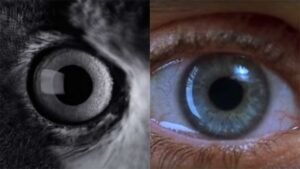Artificial intelligence (AI) is causing a revolution across various fields, from the corporate world to the medical arena. AI is becoming a valuable assistant to humans, aiding in tasks and providing in-depth analytical insights.

In a recent groundbreaking development in AI, scientists have introduced an AI tool capable of diagnosing and predicting the risk of several health conditions, including heart failure.
This remarkable AI tool, known as RETFound, leverages AI’s power to diagnose and predict the likelihood of developing a range of health issues, from eye diseases to heart failure and Parkinson’s disease. It achieves this by analyzing retinal images of individuals.
What sets RETFound apart is its innovative use of self-supervised learning, eliminating the need for researchers to label the 1.6 million retinal images used for training manually. This approach enhances efficiency and reduces the costs associated with developing AI tools for medical diagnosis.
Much like ChatGPT and other large-language models learn to predict the next word in a sentence based on context, RETFound combs through an extensive dataset of retinal images to accurately predict missing portions of these images.
In simpler terms, it learns what a retina should look like and comprehends its features over millions of images. This foundational knowledge allows it to serve as a versatile base model, adaptable for various applications.
Pearse Keane, an ophthalmologist at Moorfields Eye Hospital NHS Foundation Trust in London and co-author of the paper elaborated on RETFound, stating that “Throughout millions of images, the model somehow learns what a retina looks like and what all the features of a retina are.” This understanding forms the model’s core, making it versatile and customizable for various applications.
The paper delves deeper into how RETFound utilizes retinal scans to provide insights into an individual’s cardiovascular health. It emphasizes the unique aspect of retinas, as they offer a direct view of the body’s smallest blood vessels, forming an intricate capillary network.
Consequently, conditions impacting the entire circulatory system, like hypertension, can be directly observed through retinal images.
Moreover, retinas share some similarities with the central nervous system, resembling the brain in certain aspects. This resemblance enables retinal images to be employed in assessing neural tissue. However, interpreting these scans often necessitates specialized expertise, making AI a valuable asset in this context.
RETFound, the AI-powered tool, has already learned what a normal retina should look like from unlabeled data. Using this knowledge, it can analyze retinal scans to detect abnormalities, leading to disease diagnoses.
Scientists acknowledge that while the AI tool’s performance is impressive, particularly in detecting eye diseases like diabetic retinopathy, its accuracy in predicting systemic diseases such as heart attacks, heart failure, stroke, and Parkinson’s may not be flawless.
Nevertheless, it outperforms many other AI models in this regard. As more data and time come into play, its accuracy is expected to continue to improve.









